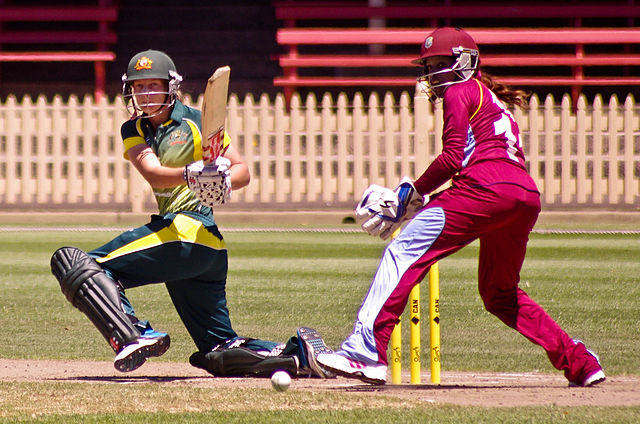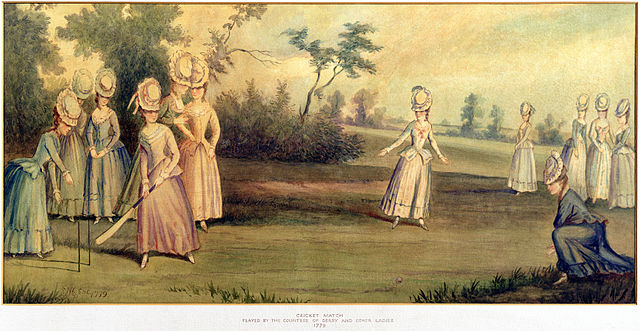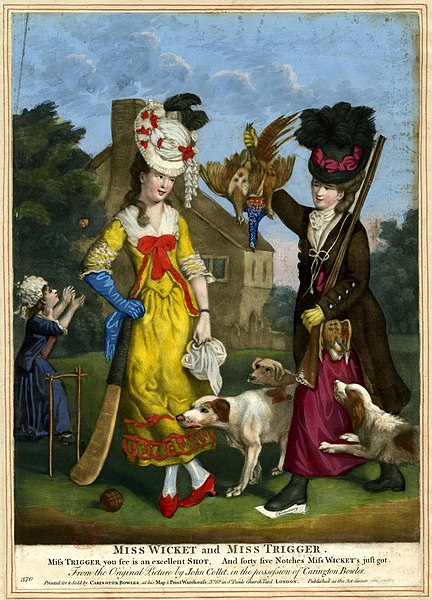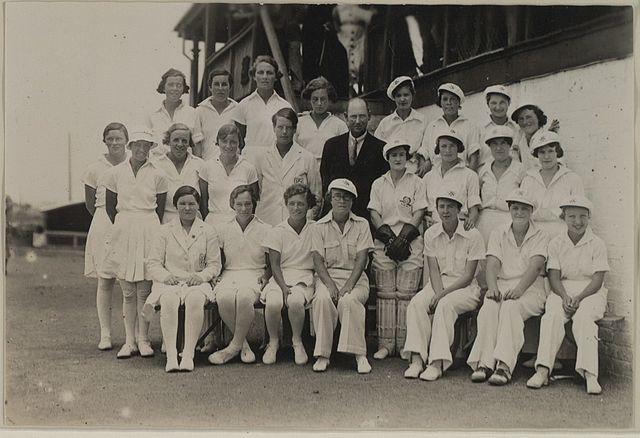Women's cricket is the team sport of cricket when played by women. Its
rules are almost identical to those in the game played by men, the main change being the use of a smaller ball. Women's cricket is beginning to be played at professional level in 11 of the 12 full members of the International Cricket Council (ICC), and is played worldwide, especially in Commonwealth nations.
Australian batter Meg Lanning plays a sweep shot while Merissa Aguilleira of the West Indies keeps wicket during the 2014 West Indies tour of Australia at the North Sydney Oval.
Watercolor painting from 1779 of a ladies cricket match played by Elizabeth Smith-Stanley, Countess of Derby and other women
A satirical image of a woman cricketer and a woman hunter from 1778. They're both wearing late-Georgian fashion with satirically shortened hemlines and one treads on a piece of paper titled "effeminacy".
Photo from 1934–35 England tour of Australia and New Zealand. The England team (L) wear divided skirts and white stockings. The "Woollengong" (sic) women's cricket team wear trousers, something that was described at the time as disgraceful.
Cricket is a bat-and-ball game that is played between two teams of eleven players on a field at the centre of which is a 22-yard (20-metre) pitch with a wicket at each end, each comprising two bails balanced on three stumps. Two players from the batting team stand in front of either wicket, with one player from the fielding team bowling the ball towards the striker's wicket from the opposite end of the pitch. The striker's goal is to hit the bowled ball and then switch places with the nonstriker, with the batting team scoring one run for each exchange. Runs are also scored when the ball reaches or crosses the boundary of the field or when the ball is bowled illegally.
Shaun Pollock of South Africa bowls to Michael Hussey of Australia during the 2005 Boxing Day Test match at the Melbourne Cricket Ground
A medieval "club ball" game involving an underarm bowl towards a batter. Ball catchers are shown positioning themselves to catch a ball. Detail from the Canticles of Holy Mary, 13th century.
Evolution of the cricket bat. The original "hockey stick" (left) evolved into the straight bat from c. 1760 when pitched delivery bowling began.
Francis Cotes, The Young Cricketer, 1768








